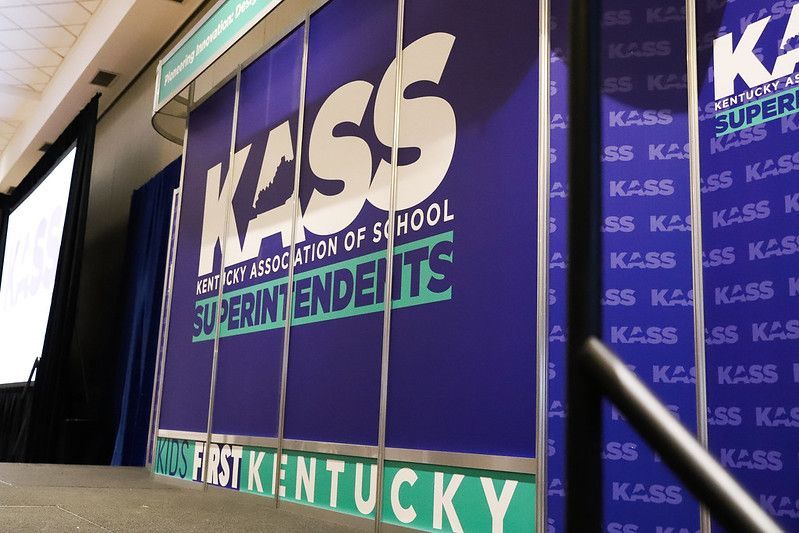Every District Deserves a Strong Superintendent
February 28, 2025
Every District Deserves a Strong Superintendent

Kentucky’s public education system thrives because of visionary leadership. This happens in our classrooms, in our schools, and across our districts. For many years, Kentucky superintendents have led this work and work tirelessly to overcome complex challenges, shape policy, and drive long-term improvements that benefit every student. In this blog, we explore the multifaceted roles of KY superintendents and why competitive compensation and robust support are essential for the future of our schools.
The Expansive Role of Kentucky Superintendents
Kentucky superintendents carry a heavy responsibility. Their role goes far beyond traditional management and with each year and increasing mandates, the role continues to expand. In addition to being the educational leader for their local districts, school superintendents must also:
- Ensure compliance with state and federal mandates that have only increased over the years and include a substantial number of regulations.
- Oversee a large number of employees. Local school districts are often the largest employer in many counties.
- Secure and manage hundreds of thousands of square feet of building space, including construction, routine upkeep, and the usage by the school community.
- Ensure the safety and well-being of every student and employee in their care.
- Steward a significant budget and be prudent with taxpayer dollars.
- Optimize efficiency in major operations including transportation and food services
This is just a sampling of the vast responsibilities of today’s superintendent. To be successful, the role demands an exceptional breadth of expertise. Superintendents must be:
- Educational visionaries who can implement research-based strategies to improve student outcomes
- Financial managers who can navigate complex state funding formulas and maintain fiscal responsibility
- Political liaisons who work effectively with school boards, community stakeholders, and state officials
- Crisis managers who handle everything from weather emergencies to public health challenges
- Human resource executives who attract and retain quality educators in a competitive market
- Facilities managers who oversee maintenance and construction of physical infrastructure
- Public relations professionals who maintain transparent communication with diverse constituencies
Undercompensation in a Demanding Field
In the private sector, executives managing organizations of similar scale and complexity routinely command significantly higher salaries, often complemented by substantial bonuses and stock options that superintendents don't receive. When making a comparison to this group, it is clear that when comparing executive leadership roles across industries, Kentucky superintendents lag behind their counterparts in the private sector.
The compensation package for Kentucky superintendents, while substantial, typically falls well below what private sector executives earn for managing organizations of comparable size and complexity. A CEO of a mid-sized company with similar budget and personnel responsibilities often earns two to three times more than a superintendent, not including equity compensation and performance bonuses.
Furthermore, the stakes in education leadership are arguably higher than in many private sector roles. Superintendents' decisions directly impact community development, social mobility, and the future workforce. Their success or failure affects not just quarterly profits but the life trajectories of thousands of students and the long-term economic health of their communities.
Consider also the demanding nature of the position. Superintendents regularly work 60+ hour weeks, attend numerous evening events, and must be available 24/7 for emergencies. They operate under intense public scrutiny, with their decisions and actions constantly subject to community oversight and media attention. Unlike private sector executives, they must conduct all business in the public eye, adhering to strict transparency requirements and open meetings laws.
The qualifications required for the position further justify the compensation. Kentucky superintendents must possess advanced degrees, specialized certification, and extensive experience in education leadership. Many hold doctoral degrees and have invested significantly in their professional development. Their compensation should reflect this substantial investment in expertise and credentials.
When comparing superintendent salaries to other public sector leadership positions, the compensation appears even more reasonable. University presidents, hospital administrators, and other public agency executives often earn comparable or higher salaries while managing smaller budgets and fewer employees.
Looking at the return on investment, effective superintendents create value that far exceeds their compensation. Through strategic leadership, they can:
- Improve student achievement metrics that enhance property values
- Secure grants and alternative funding sources
- Implement efficiency measures that save taxpayer dollars
- Drive economic development by producing well-prepared graduates
- Build community partnerships that leverage additional resources
Finally, the Kentucky Superintendency operates in four year contracts. Unlike other educational professionals or those in leadership positions, superintendents have no guarantee of tenure or continuing employment status. Much like their private sector counterparts, they are on a specified contract, determined by an elected board of education, every 4 years.
A Future Built on Informed Investment
The success of Kentucky’s public education system hinges on the strength and stability of its leadership. By recognizing the full scope of a superintendent’s role—from strategic vision and daily operations to overcoming budgetary and contractual challenges—we see that the compensation for superintendent salaries are best set when locally elected boards of education, held accountable by elections from their community, work with key stakeholders to hire, evaluate, and extend contracts to superintendents, without state directive or outside influence. When we invest in our superintendents, we invest in the future of every student and impact every community in the Commonwealth.
Kentucky superintendents are more than administrators—they are visionary leaders dedicated to creating thriving, future-ready schools. Through the combined efforts of our superintendents, school leaders, educators, and our committed stakeholders, we will continue pave the way for a brighter educational landscape in Kentucky.

Henry County Schools, located in Kentucky’s Golden Triangle, is making significant strides in student success through investments in school safety, career and technical education (CTE), and academic excellence. With legislative support fueling these advancements, the district is creating a brighter future for students by ensuring they have access to industry-relevant training, a secure learning environment, and evidence-based curriculum programs. Prioritizing Student Safety with Expanded SROs School safety is a top priority for Henry County Schools, and thanks to increased legislative funding, the district has expanded its School Resource Officer (SRO) program. An additional officer has been assigned to elementary schools, providing younger students with a safer learning environment. This initiative underscores the district’s commitment to student well-being and fostering a positive school culture. Investing in Career & Technical Education (CTE) for Future Workforce Success To prepare students for high-demand careers, Henry County Schools has upgraded its CTE programs with state-of-the-art equipment and software. These improvements impact pathways in: Media Engineering Health Science Business Agriculture By integrating industry-standard tools into classroom learning, students gain hands-on experience that makes them more competitive in today’s workforce. This initiative is a game-changer for career readiness, ensuring graduates leave high school equipped with the skills needed for success. Academic Gains Through Evidence-Based Curriculum & Leadership Development Academic excellence remains at the heart of Henry County Schools. The district has implemented an evidence-based Reading and Math curriculum for grades K-8, alongside the Leader in Me program—a leadership initiative designed to improve student engagement and school culture. By the Numbers: How These Investments Are Paying Off Henry County Schools is seeing measurable improvements across multiple areas: ✔️ Ranked 13th in Kentucky for Reading & Math growth (out of 172 districts) ✔️ Largest academic score increase in the OVEC region (from 56.87 to 62.85) ✔️ Notable reductions in novice performance across nearly all grade levels ✔️ Increase in students achieving proficiency & distinguished levels on assessments Beyond academics, the district has also made incredible strides in school culture and climate : ✔️ School Climate ranking improved from 124th to 19th in the state ✔️ Staff-Leadership relationships jumped from 132nd to 14th ✔️ Student Behavior ranking surged from 71st to 8th Community & Legislative Support: The Driving Force Behind Success These remarkable improvements wouldn’t be possible without legislative support, grant funding, and community partnerships. With continued investment, Henry County Schools can further expand career pathways, safety initiatives, and innovative learning opportunities. What’s Next for Henry County Schools? With this momentum, the district is planning: ✅ Further expansion of CTE pathways to provide students with cutting-edge career training ✅ Ongoing implementation of evidence-based curriculum for even greater academic success ✅ Potential for additional SRO placements to strengthen school safety Henry County Schools: A Model for Student Success At Henry County Schools, education isn’t just about textbooks and test scores—it’s about preparing students for a successful future. Whether through safer schools, hands-on career training, or innovative teaching methods, the district is setting a new standard for excellence in education. For more information, visit Henry County Schools website.
Kentucky’s Workforce Innovation Board has officially recognized education as a high-demand sector. Every career begins with an educator and it’s imperative that as we recognize the demand, we provide solutions to addressing the challenge. This will mean every education stakeholder - legislators, educators, the Department of Education, parents, and students, must help find solutions to strengthen the pipeline of qualified educators. As the state faces teacher shortages and increasing demands on school leaders, the Kentucky General Assembly has the power to enact policies that will make a lasting impact. At the Kentucky Association of School Superintendents, we believe every district deserves a strong superintendent, every school deserves a highly effective principal, and every classroom a highly qualified teacher. Additionally, many other roles are part of the education sector: instructional assistants, nutrition service personnel, administrative and clerical staff, district leadership, etc. Education as a profession must have bold leadership if we are to see a strong and vibrant Commonwealth. It is foundational to everything we do. To ensure every Kentucky student has access to high-quality teachers, the legislature must focus on removing barriers to entry, providing financial incentives, and aligning workforce development efforts with education needs. Here are key areas where legislative action is critical. 1. Prioritizing Education Workforce Legislation in 2026 The General Assembly should convene a panel of stakeholders to provide policy and budget recommendations. This panel should include legislators, school and district leaders, teachers and other school personnel, workforce leaders, and post-secondary institutions. Clear guardrails from lawmakers will help shape sustainable, long-term solutions. This effort should be a top legislative priority outside of the budget process but must work in tandem with state funding initiatives to ensure financial feasibility. Senator Wise and the implementation of the School Safety and Resiliency Act (2019) is a great example of the type of panel we recommend. There are many other examples of past legislation where this approach has led to great outcomes for education and sustainable policy solutions. Our blog last week touched on a few of this and can be found HERE . 2. Allocating Workforce Development Funds to Education Kentucky already invests in workforce development initiatives for high-demand fields, yet education often remains underfunded in these efforts. The legislature should explore ways to direct state workforce development funds that could support: Scholarships and stipends for aspiring educators in hard-to-staff regions. Utilizing regional workforce development boards to incorporate education into their planning and resource allocation. Incentives for school districts to establish grow-your-own teacher programs. There are examples in Kentucky of these things already happening. Since 1948, the state Department of Transportation recognized a need to have high quality civil engineers and developed a scholarship for students enrolled in Kentucky universities. In exchange, they give service in the summers and upon graduation to the Department. This model could easily be used with education as well, particular in high demand content areas and hard to staff locations. 3. Reforming Teacher Certification Pathways To expand the educator pipeline while maintaining quality, the legislature should empower the Education Professional Standards Board (EPSB) and the Kentucky Department of Education (KDE) to give a list of policy recommendations and changes that would: Streamline alternative certification pathways for mid-career professionals, particularly in STEM fields. Revise certification requirements to allow greater flexibility while ensuring teacher competency. Expand micro-credentialing programs that provide targeted training in high-need subject areas. Align workforce needs to programs and certifications through colleges and universities. Legislators have attempted to address some of these each session. What has unfortunately happened is that tweaks to the system have created difficulty for aspiring educators to understand, local districts to navigate, and post-secondary partners scrambling to determine the best options to support the profession. Instead of a piecemeal approach, policymakers must look holistically at the system and be bold with the simplification and alignment necessary to strengthen the educator pipeline. A Legislative Path Forward Addressing Kentucky’s education workforce crisis requires decisive action from the General Assembly. By prioritizing targeted legislation, allocating workforce development funds, and reforming certification pathways lawmakers can strengthen the future of public education in Kentucky. The time to act is now—Kentucky’s students, teachers, and school leaders are counting on it.

Empowering Students, Strengthening Communities Butler County Schools is making bold strides to provide high-quality education, career readiness, and equitable opportunities for its students. Located in Morgantown, Kentucky, the district serves over 2,100 students across five schools, focusing on academic excellence, character development, and preparing students for lifelong success. With the recent increase in SEEK funding and the expansion of dual credit scholarship opportunities, Butler County Schools is ensuring that every student—regardless of background—has the tools they need to thrive in an ever-changing world. Addressing Funding Disparities in Rural Schools One of the biggest challenges rural school districts face is maintaining facilities, attracting top educators, and providing students with the same cutting-edge educational experiences found in wealthier, urban areas. Butler County Schools has been at the forefront of advocating for Tier 1 Funding Equalization, ensuring that all Kentucky students have access to the same opportunities, no matter where they live. With additional SEEK funding, the district is tackling these disparities by: • Improving school facilities to create a safe and modern learning environment. • Enhancing teacher recruitment efforts to attract and retain highly qualified educators. • Expanding student programs to provide diverse career pathways and extracurricular opportunities. Expanding Dual Credit Opportunities: A Game Changer for Students One of Butler County Schools’ most impactful initiatives is its Dual Credit Scholarship Program, allowing students to earn college credits while still in high school. By reducing financial barriers, the district is helping families save thousands on tuition costs while preparing students for postsecondary success. The Impact: 📊 86.6% of Butler County students are Postsecondary Ready – achieving success through dual credit courses, academic readiness, or career certifications. 🎓 79.9% of students are Career Ready, with 66.4% earning Industry Certifications that set them apart in the workforce. 📈 10% increase in math proficiency and 8% increase in reading proficiency, demonstrating the effectiveness of targeted academic interventions. 📉 4% reduction in novice learners, showing a strong commitment to student support and success. Student Perspective: “The dual credit program has been life-changing for me. I’m earning college credits before even graduating high school!” – Butler County High School Senior Investing in Innovation: How Butler County Schools is Leading the Way To ensure personalized learning experiences for every student, Butler County Schools is investing in STEAM programs, career and technical education, and state-of-the-art resources. These efforts provide students with hands-on learning, mentorship opportunities, and industry partnerships that prepare them for real-world success. Key Areas of Focus: ✔ Technology & Career Training: Collaborating with local colleges and industry leaders to provide cutting-edge education and hands-on learning experiences. ✔ Community & Family Engagement: Partnering with businesses to offer internships, mentorships, and career exploration programs. ✔ Workforce Preparation: Ensuring students graduate with real-world skills, industry certifications, and a competitive edge in the job market. The Future of Butler County Schools: What’s Next? The district isn’t stopping here. Butler County Schools is committed to expanding opportunities, securing additional funding, and implementing new initiatives to better serve students. 🔹 Upcoming Enhancements: ✔ More career pathways aligned with workforce demands. ✔ Increased funding for STEAM education and technology integration. ✔ Additional scholarships to help even more students access college-level courses. Butler County Schools: A Commitment to Excellence At Butler County Schools, education isn’t just about academics—it’s about empowering students, strengthening communities, and shaping the leaders of tomorrow. Through increased funding, expanded dual credit opportunities, and a dedication to innovation, the district is ensuring that every student has the opportunity to succeed.

Expanding Career Opportunities Through State Funding For over 219 years, Elizabethtown Independent Schools (EIS) has been a pillar of academic excellence in Kentucky. However, prior to 2022, the district faced a significant challenge—a lack of state funding for Career and Technical Education (CTE). This funding gap limited the opportunities available to students, preventing them from gaining hands-on experience in high-demand fields. Thanks to LAVEC and Supplemental CTE funding, EIS has now transformed its CTE programs, creating new career pathways, upgrading learning environments, and forming strategic industry partnerships to ensure students graduate career-ready. The Power of Legislative Support in Education With newly allocated state funding, EIS was able to: ✔ Introduce Three High-Demand Career Pathways – The district launched Health Science, Education, and JROTC pathways to meet student interest and workforce demands. ✔ Enhance Engineering and Business Pathways – Investments in state-of-the-art equipment have elevated hands-on learning experiences. ✔ Establish a School-Based Enterprise – A student-run business within the business pathway is providing real-world entrepreneurial training, with plans for expansion next year. Measurable Impact: Student Success on the Rise The impact of these initiatives is already visible: Increased Enrollment in Career Pathways – More students are choosing CTE programs, preparing them for high-paying, in-demand careers. Stronger Transition Readiness – EIS is seeing a rise in students graduating with job-ready skills and industry certifications. Project-Based Learning Expansion – Hands-on learning is now embedded across all schools, preparing students for real-world problem-solving before high school. “This funding has completely changed what we can offer our students. They now have access to career pathways that were previously unavailable, setting them up for success beyond graduation.” – Paul Mullins, Superintendent The Role of Community Partnerships in Student Success One of the key drivers of EIS’s CTE expansion has been strong community and industry partnerships. These collaborations have provided resources, mentorship, and job training opportunities that directly benefit students. Baptist Health – A critical partner in launching the Health Science Pathway, providing medical equipment and supplies to support student training. By working with local businesses and organizations, EIS is ensuring that students gain hands-on experience and industry exposure, making them highly competitive in the job market. Looking Ahead: What’s Next for Career and Technical Education at EIS? The transformation of career and technical education at Elizabethtown Independent Schools is only just beginning. Looking ahead, the district is focused on: ✔ Expanding the School-Based Enterprise – Giving students even more opportunities to develop entrepreneurial skills. ✔ Growing Industry Partnerships – Strengthening ties with local businesses, healthcare providers, and educational institutions to enhance learning experiences. ✔ Exploring Additional Career Pathways – Identifying new programs that align with workforce needs and student interests. With continued support from legislators, industry leaders, and the community, EIS is shaping the future of career and technical education, ensuring that every student has the skills, knowledge, and experience needed to thrive in college, careers, and beyond. Join the Movement: Supporting the Future of CTE The success of Elizabethtown Independent Schools demonstrates the power of legislative funding in transforming education. By investing in career pathways, workforce training, and hands-on learning, districts across Kentucky can prepare students for real-world success. Want to learn more about how EIS is leading the way in career education? Visit their WEBSITE for more details.




